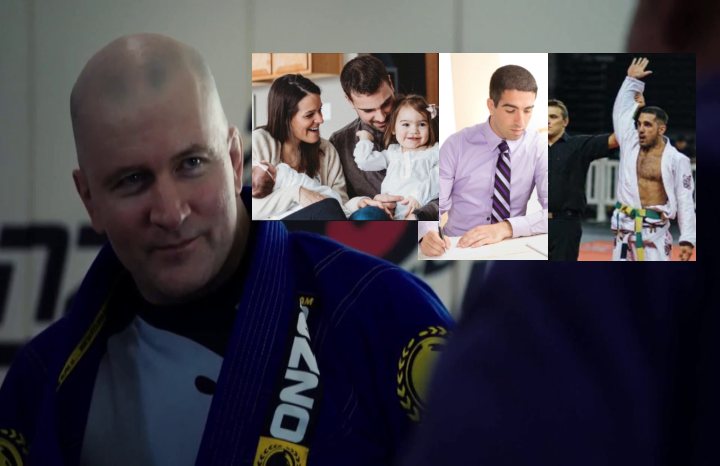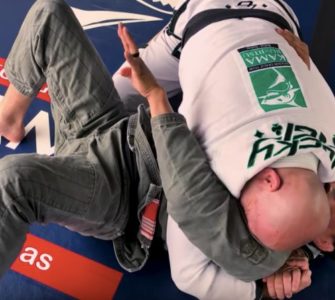Can an older athlete, working a busy professional career and many other demands from marriage and family etc train to be competitive with the best Jiu jitsu athletes in the world who are much younger and more athletic and who train full time?
Believe it or not, Being older than 30, training Brazilian Jiu-Jitsu two to three times a week has lots of advantages. Whether you have a busy work schedule, family matters to attend to, or your academy just doesn’t offer enough classes, then don’t fret, it can actually work to your advantage.
The first rule to being successful in Jiu-Jitsu, is to be mentally and physically engaged in your classes. Many times, students who want to get better faster, will train everyday, or even five to six times a week. Sadly, they often find themselves totally burned out. They show up to practice, and do some drilling and light rolling, but they aren’t really mentally present, since their bodies are so overtrained. They’re so fatigued, that they’re not really “there.” Overtraining will kill your BJJ flow, and in the long run cause injuries. Training too much is sometimes not a good thing.
If you’re going to make a commitment to attend practice two to three times a week, make sure you’re fully engaged in the class every time you do show up. People who are engaged are always working on something new, listening and playing close attention to advice given by their coach, or peers. My coach gave me a great piece of advice to maintaining good posture when my opponent has me in a closed guard. I could have easily shrugged it off, and said I would work on it, and even forgotten about it. But that’s an example of an unengaged student, or someone who isn’t fully invested in their time on the mats. Of course, I gladly took my coach’s advice, and it has helped me greatly in so many instances when I roll and find myself in that position, to stay stable. Listening with an open mind is a huge element to being successful in Jiu-Jitsu.
Another plus of only training two to three times a week, is that it offers you enough time to be well rested, and stay refreshed the next time you come to the gym. If you’re maintaining a good diet, doing some foam rolling and stretching, weight lifting, swimming, or running, then you’ll be in good shape, which is always advantageous for what is a full-body demanding sport such as Brazilian Jiu-Jitsu. This reasonable schedule will also allow you plenty of time in the week to participate in other things you enjoy. So by training less, you will have the chance to practice BJJ without picking and choosing between other activities you love.
In the end, it’s better to show up twice a week than not show up at all. The only tougher part of attending less training is trying to remember what you learned during the week. Many reclaimed BJJ black belts swear by keeping a “BJJ log” of what you learned during your training. It will help with technique retention, and can actually help you to improve on a move, even by just visualizing it. Work on your cardio while you’re away from practice, maintain a balanced diet, and stay focused during the training sessions you can attend. With all these elements in sync, you’re sure to be on the right path.
BJJ brain John Danaher explains on instagram how you can defeat world class athletes while just training part time:
Can an older athlete, working a busy professional career and many other demands from marriage and family etc train to be competitive with the best Jiu jitsu athletes in the world who are much younger and more athletic and who train full time?
This is a question i am often asked. Most Jiu Jitsu practitioners are enthusiastic amateurs who try to train as much as they can around their commitments to spouse, family and career while factoring their age and physical condition into the equation. It’s natural to ask – how good can I really get under those circumstances in comparison to the best athletes in the world? My answer is this – how far you go will always be determined by your effort – but if you train hard and intelligently for long enough YOU WILL BE ABSOLUTELY SHOCKED HOW GOOD YOU CAN GET AS AN OLDER PART TIME ATHLETE FULL TIME PARENT, CAREER PROFESSIONAL.
Here is a truly great example. This is my student Jason Lees, forty three years old, married and a highly ranked lawyer in a prestigious New York City law firm. He took on the outstanding BJJ world champion Muhamed Aly, one of the most athletic and physically gifted Jiu Jitsu players in the world at a Grapplers Quest US Nationals event in NJ a couple of years ago. After a brief spell of hand fighting and a single leg attack, Mr Lees performed a very nice ashi garami entry from standing and won in around forty seconds via heel hook from ashi garami – an incredible result for an older athlete who trains part time and juggles marriage and a very busy legal career as his primary interest. How many people can show up to work on Monday morning and tell their co-workers they beat a dominant professional world champion in their chosen sport?
What an amazing example of a part time older athlete getting full time younger man results!! Don’t sell yourself short on what can be achieved if your training program is a good one and there is passion in your heart backed by discipline in your mind and patience in your soul. I hope this incredible achievement by Mr Lees inspire you as much as it does me. I have so many outstanding older students who I am sure can inspire you all to greater success in your own journey.

















